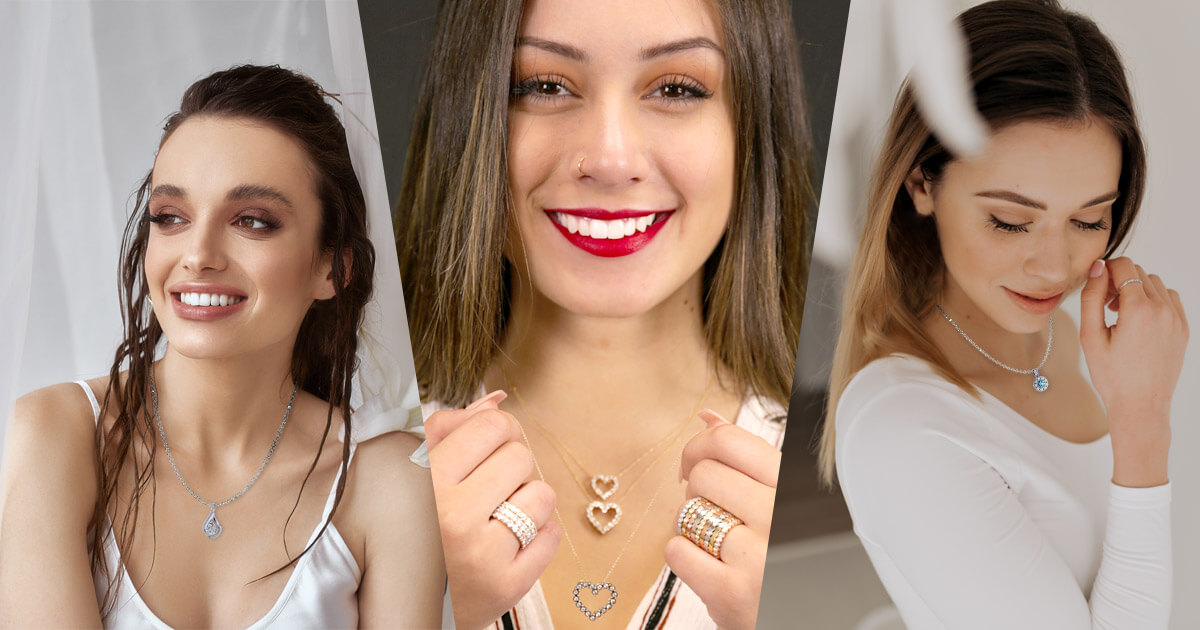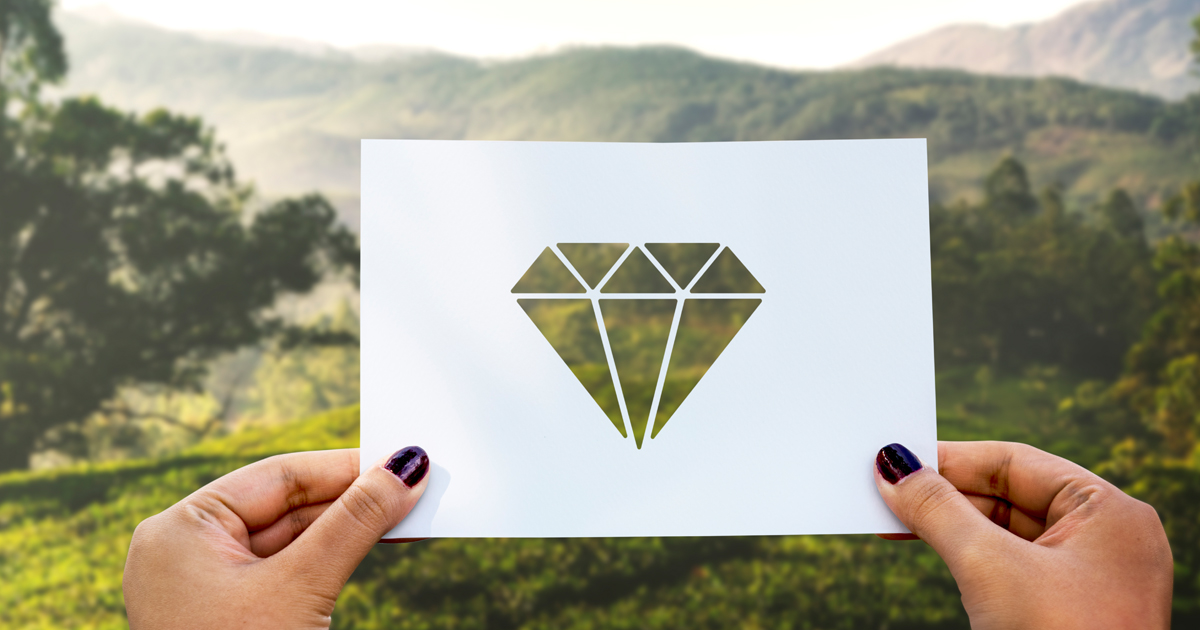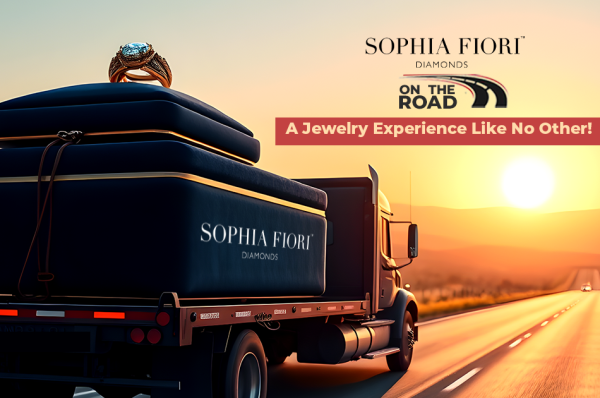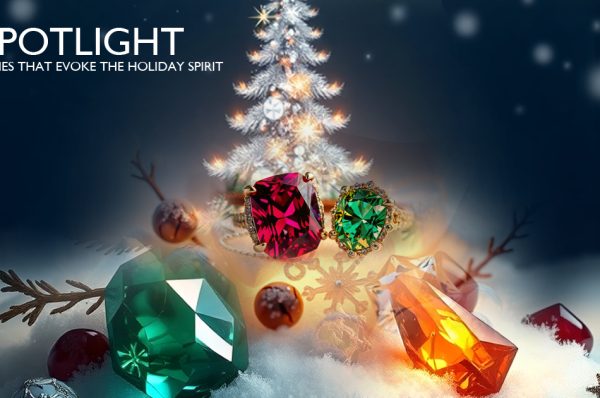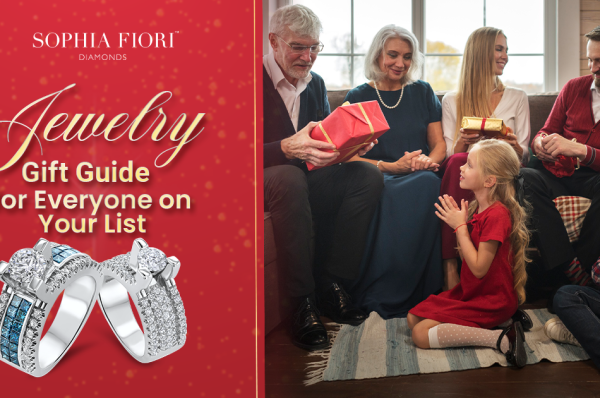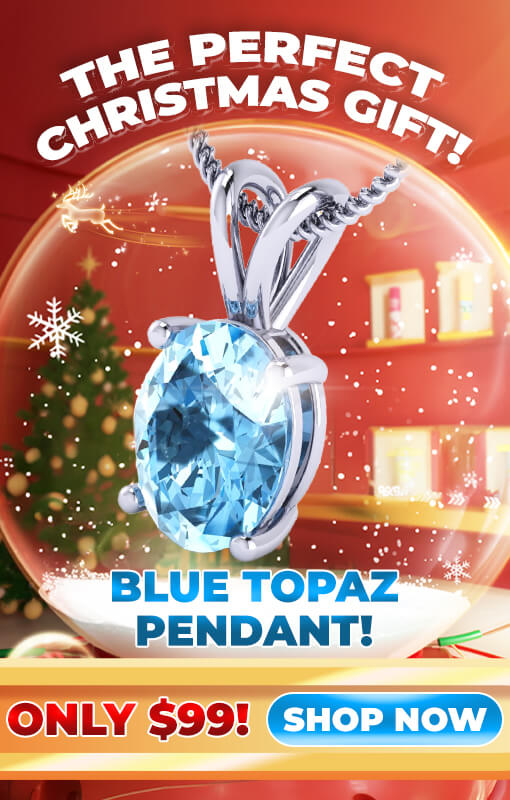Are you in the market for a diamond? Whether you’re eyeing an engagement ring or a new addition to your jewelry box, knowing how to pick the right one is crucial.
Are you ready to select a diamond that’s more than just a sparkling stone, but a symbol of timeless beauty? Let’s go through the essentials of choosing a diamond that fits both your personal taste and your budget.
We are here to ensure that your choice not only enhances your style but also represents a wise investment. Let’s get started.

Your Diamond Buying FAQs Answered
As you embark on the journey of selecting the perfect diamond, you may have some questions in mind. Here are some FAQs to guide you through the process:
How to tell a diamond is of good clarity?
To determine if a diamond is genuine and of good clarity, there are several methods you can employ:
- Visual Inspection: Examine the diamond closely under good lighting conditions. Look for any imperfections, such as blemishes (external flaws) or inclusions (internal flaws). A genuine diamond will typically have very few, if any, visible imperfections due to its natural formation process.
- Brilliance and Sparkle: Genuine diamonds have exceptional brilliance and sparkle due to their ability to refract and reflect light. Hold the diamond up to light and observe how it interacts with the light. A genuine diamond will exhibit a high level of brightness, fire, and scintillation.
- Clarity Grading: Familiarize yourself with the clarity grading scale used for diamonds, which ranges from “Flawless” to “Included”. Diamonds with higher clarity grades are typically more valuable.
- Magnification: Use a jeweler’s loupe or magnifying glass to examine the diamond for any internal flaws. Genuine diamonds may have tiny inclusions that are difficult to see with the naked eye but are visible under magnification. However, be cautious as some synthetic diamonds may also have similar characteristics.
- Certification: Look for diamonds that come with a certification from reputable gemological laboratories such as the Gemological Institute of America (GIA) or the American Gem Society (AGS). These certifications provide detailed information about the diamond’s characteristics, including its clarity grade.
- Professional Appraisal: Consider having the diamond appraised by a certified gemologist or jeweler. They can provide an expert assessment of the diamond’s authenticity and quality based on rigorous testing and evaluation methods.
By using these methods in combination, you can confidently determine if a diamond is genuine and of good clarity. If in doubt, always seek the expertise of a qualified professional for further guidance.
What should I compromise when buying a diamond – color or clarity?
When purchasing a white or color diamond, the decision between prioritizing color or clarity ultimately depends on your personal preferences, budget, and intended use for the diamond.
If you’re opting for a white diamond:
- Color: The color grade of a white diamond refers to its lack of color, with higher grades indicating less color presence. If you prioritize brilliance and sparkle, you may want to prioritize color over clarity. However, if you prefer a warmer hue or are working with a limited budget, you might be willing to compromise on color in favor of better clarity.
- Clarity: Clarity refers to the absence of internal and external imperfections, or inclusions and blemishes, within the diamond. While higher clarity grades command higher prices, they may not significantly impact the diamond’s appearance to the naked eye. If you prioritize visual purity and are willing to pay a premium, you might prioritize clarity over color.
If you’re considering a color diamond:
- Color: For color diamonds, such as fancy colored diamonds, the intensity and hue of the diamond’s color are paramount. The color grade reflects the depth and richness of the diamond’s hue, with more vivid colors typically commanding higher prices. If color is the primary feature you desire, you may compromise on clarity to achieve the desired hue and intensity.
- Clarity: While clarity is still important for color diamonds, imperfections may be less noticeable due to the diamond’s vibrant coloration. Depending on the specific hue and saturation you’re seeking, you may be willing to compromise on clarity to attain a more intense color.
Ultimately, there is no right or wrong answer when it comes to prioritizing color or clarity in diamond selection. It’s essential to consider your preferences, budget constraints, and intended use for the diamond to make an informed decision. Consulting with a reputable jeweler or gemologist can also provide valuable insight and guidance tailored to your individual needs.
How do I care for my diamond jewelry?
Caring for your diamond and diamond jewelry is essential to maintain their brilliance and beauty over time. Here are some tips to ensure your diamonds sparkle for years to come:
- Regular Cleaning: Clean your diamond jewelry regularly to remove dirt, oils, and other residues that can dull its shine. Use a mild solution of warm water and dish soap, and gently scrub the diamond with a soft brush or cloth. Rinse thoroughly and pat dry with a clean, lint-free cloth.
- Avoid Harsh Chemicals: While diamonds are durable, they can still be damaged by harsh chemicals found in household cleaners, chlorine, and cosmetics. Remove your diamond jewelry before swimming, cleaning, or applying lotions to prevent exposure to these substances.
- Safe Storage: Store your diamond jewelry separately from other jewelry pieces to prevent scratching. Consider storing each piece in a soft pouch or individual compartment in a jewelry box to minimize friction and potential damage.
- Regular Inspection: Inspect your diamond jewelry regularly for any loose stones or signs of damage. If you notice any issues, take your jewelry to a reputable jeweler for inspection and repair.
- Professional Cleaning and Maintenance: Periodically, take your diamond jewelry to a professional jeweler for thorough cleaning and maintenance. They have specialized equipment and expertise to clean and inspect your jewelry, ensuring it remains in optimal condition.
- Insurance Coverage: Consider obtaining insurance coverage for your diamond jewelry to protect against loss, theft, or damage. Consult with your insurance provider to understand your coverage options and ensure your valuable pieces are adequately protected.
By following the above care tips and practicing regular maintenance, you can preserve the beauty and brilliance of your diamond jewelry for generations to come.
What are financing options available for diamond purchases in the US?
In the USA, there are several financing options available for diamond jewelry purchases, catering to different budgets and preferences. Here are some common financing options to consider:
- Store Financing: Many jewelry stores offer in-house financing options, allowing customers to spread the cost of their purchase over time. These financing plans may come with promotional offers such as zero percent interest for a certain period or deferred payment options.
- Credit Cards: Using a credit card to finance your diamond jewelry purchase is another option. Some credit cards offer special financing promotions, such as zero percent interest for a limited time or rewards points for every dollar spent, which can be redeemed for future purchases.
- Personal Loans: If you prefer more flexibility in repayment terms, you can consider taking out a personal loan to finance your diamond jewelry purchase. Personal loans typically offer fixed interest rates and repayment terms ranging from a few months to several years.
- Online Financing Platforms: There are online financing platforms specifically designed for jewelry purchases, offering installment plans with fixed monthly payments and competitive interest rates. These platforms often provide instant approval and seamless online application processes.
- Layaway Plans: Some jewelry stores offer layaway plans, allowing customers to reserve their desired diamond jewelry by making regular installment payments over a specified period. Once the full payment is made, the jewelry is released to the customer.
Before choosing a financing option, it’s essential to consider factors such as interest rates, repayment terms, and any associated fees. Be sure to compare different financing options and read the terms and conditions carefully to make an informed decision that aligns with your financial situation and preferences.
Can I upgrade my diamond in the future?
Yes, many jewelers offer diamond upgrade programs that allow customers to trade in their current diamond for a larger or higher-quality one in the future. Here’s how it typically works:
- Eligibility: To qualify for a diamond upgrade, the original diamond must meet certain criteria set by the jeweler. This usually includes being in good condition with minimal wear and tear.
- Trade-In Value: The jeweler will assess the current market value of your diamond based on factors such as cut, color, clarity, and carat weight. They will then offer you a trade-in value for your diamond, which can be used towards the purchase of a new one.
- Upgrade Options: Once you’ve received the trade-in value for your diamond, you can explore the jeweler’s inventory to choose a new diamond that meets your preferences and budget. You may have the option to upgrade to a larger size, higher quality, or different shape.
- Additional Cost: Depending on the value of the new diamond you choose, there may be an additional cost to cover the price difference between your trade-in diamond and the upgraded one.
- Terms and Conditions: It’s important to review the specific terms and conditions of the jeweler’s upgrade program to understand any restrictions or limitations. This may include the timeframe within which you can upgrade your diamond and any fees associated with the transaction.
By participating in a diamond upgrade program, you can enjoy the flexibility of upgrading your diamond in the future to reflect your changing preferences and lifestyle. Be sure to inquire with your jeweler about their specific upgrade options and policies to make an informed decision.
By addressing the above common questions, you can feel more confident and informed as you navigate the process of choosing a good diamond.

Master Designer Bernard Bachoura Unveils Diamond Wisdom
Step into the world of exquisite diamonds with insights from the esteemed Master Designer, Bernard Bachoura. With years of unparalleled experience in crafting breathtaking jewelry, Bernard shares his valuable wisdom on choosing the perfect diamond.
According to Bernard, the essence lies in understanding the unique interplay of the Four Cs—Cut, Color, Clarity, and Carat weight. Bernard emphasizes the significance of a well-balanced cut, capturing the brilliance that turns a diamond into a timeless masterpiece.
Bernard’s discerning eye guides enthusiasts towards selecting diamonds that not only sparkle brilliantly but also resonate with their personal style. Delve into Bernard Bachoura’s expertise and elevate your diamond journey with unparalleled elegance and sophistication.
Your Diamond Journey Begins Here!
Dear valued readers,
Embark on an extraordinary diamond exploration with Sophia Fiori Diamonds! Your opinions matter, and we want to ensure that your diamond-buying experience is nothing short of perfect. By taking a moment to complete our Personalized Diamond Preferences Survey, you empower us to provide tailored suggestions, advice, and tips that align with your unique tastes.
Your insights will not only guide our recommendations but also contribute to creating a seamless and delightful journey as you discover the diamond that captures your heart. Click the link below to begin your survey and let the magic of Sophia Fiori Diamonds unfold in your pursuit of the perfect gem.

01. Understanding the 4 C’s of Diamonds
When choosing a diamond, it is important to understand the 4 C’s – Cut, Clarity, Color, and Carat. These factors determine the quality and value of a diamond.
- The cut refers to how well the diamond is shaped and faceted, affecting its brilliance and sparkle.
- Clarity measures the presence of inclusions and blemishes, with higher clarity diamonds being more valuable.
- Color grades diamonds on a scale from colorless to light yellow or brown, with colorless stones being the most sought after. While white diamonds are timeless, you can also explore the world of colored diamonds and understand the grading scale for color.
- Carat measures the weight of the diamond, with larger carat weights typically being more valuable.
Each of the above factors play a crucial role in determining the overall quality and value of a diamond.

02. Diamond Shapes and Settings
Diamond Shapes and Settings play a crucial role in enhancing the beauty and overall look of a diamond. From the classic round shape to unique cuts like princess or marquise, each shape brings its own charm. The right diamond shape depends on personal preference and style.
- The round shape is classic and brilliant.
- The princess’ shape offers a modern and sleek look.
- Other popular shapes include the cushion, emerald, and pear.
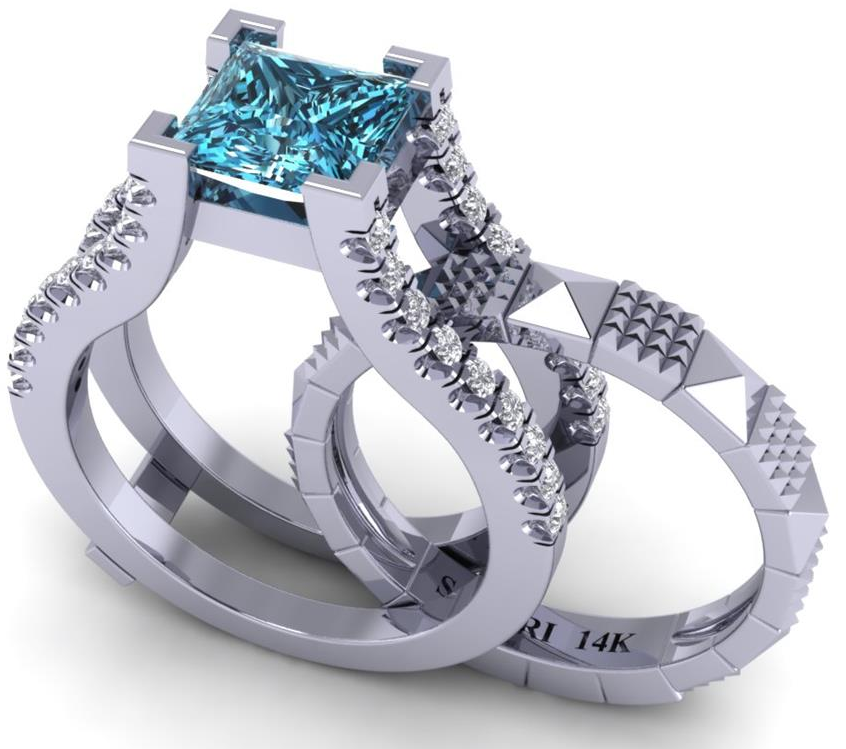
Additionally, the choice of diamond setting, such as a solitaire or pave setting, can further enhance the diamond’s brilliance and create a stunning aesthetic. It is important to consider both the diamond shape and setting when choosing the perfect diamond to ensure it aligns with your individual taste and desired look.
03. Popular Diamond Certifications
When choosing a diamond, it is important to look for certifications from reputable organizations like the Gemological Institute of America (GIA) and the American Gem Society (AGS). These certifications ensure the quality and authenticity of the diamond and provide buyers with peace of mind.

Other popular diamond certifications include the International Gemological Institute (IGI) and the European Gemological Laboratory (EGL). Remember to always ask for a diamond certification to ensure that you are purchasing a genuine and high-quality stone.
A certified diamond often commands a higher price compared to uncertified stones due to the added assurance of its quality. Therefore, diamond certifications play a crucial role in establishing the value and quality of a diamond in the market.
04. Conflict-Free and Ethical Diamond sourcing
When sourcing a diamond, it is important to choose conflict-free and ethical diamonds that are mined and produced responsibly. This ensures that the diamonds have not been used to fund illegal activities or contribute to human rights abuses.

Certifications such as the Kimberley Process and the Responsible Jewellery Council provide standards and regulations for ethical diamond sourcing. By choosing ethical diamonds, you can feel good about your purchase while supporting sustainable and responsible practices in the diamond industry.
05. Budgeting for your Diamond Purchase
When setting a budget for buying a diamond, it is important to consider your income, savings, and financial obligations. Determine a comfortable amount that you can afford to spend on a diamond without compromising your financial stability.
Consider factors such as your desired diamond characteristics, such as carat weight and quality, which will affect the price. It is also important to do some research and compare prices from different sources to ensure you are getting the best value within your budget.
By setting a budget, you can make a more informed decision and find the perfect diamond that meets both your preferences and financial goals.

Tips for getting the best value within your budget
Here are some tips for getting the best value within your budget when buying a diamond:
- Prioritize the 4 C’s: Focus on the aspects that are most important to you, such as finding a diamond with a higher cut grade or prioritizing clarity over carat weight. This will help you make the most of your budget.
- Consider a lower color grade: Opting for a slightly lower color grade can save you money while still maintaining a beautiful appearance. Keep in mind that the color difference is often not noticeable to the naked eye.
- Shop around and compare prices: Take the time to research and compare prices from different retailers and online platforms. This will help you find the best deal and ensure you are getting the most value for your budget.
- Look for alternative diamond shapes: Round diamonds tend to be more expensive compared to other shapes, such as princess or cushion cuts. Exploring different diamond shapes can help you find a beautiful diamond at a lower cost.
- Consider diamond enhancements: Some diamonds may have minor flaws that can be concealed through treatments like laser drilling or fracture filling. These enhancements can improve the appearance of the diamond and bring down the cost.
Remember, the goal is to find a diamond that matches your preferences and budget. By following the above tips, you can make a smart and informed decision while getting the best value for your money.

Let’s inject some excitement into the diamond selection process!
Choosing the perfect diamond is not just about finding a sparkling gem; it’s also an adventure into the world of shapes, settings, colors, and more.
- Shapes: Imagine diving into a treasure trove of options, from the classic brilliance of a round cut to the edgy allure of a princess cut. Each shape tells its own story and reflects your unique personality.
- Settings: Let’s not forget about settings – whether you prefer the simplicity of a solitaire or the intricate details of a halo, there’s a setting that perfectly complements your chosen diamond.
- Colors: Exploring diamond colors adds an extra layer of fun; from the icy sparkle of a white diamond to the captivating depth of a fancy colored diamond, the possibilities are endless.
So, buckle up and embark on this educational and entertaining journey to find your dream diamond – it’s sure to be a sparkling adventure you’ll never forget!
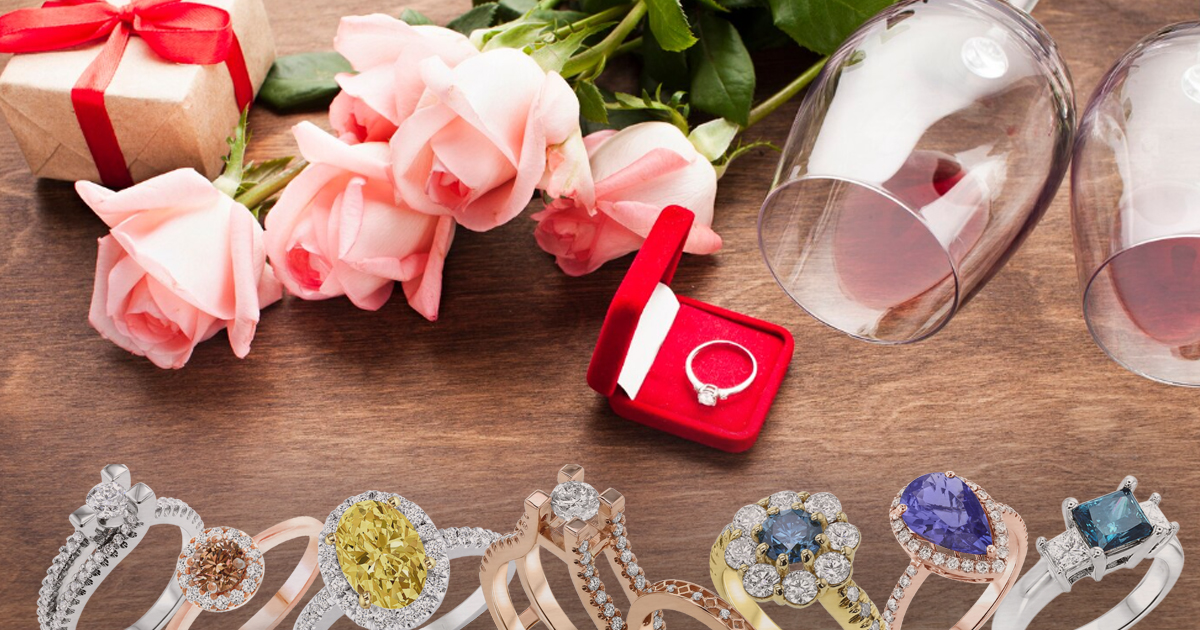
Exploring world of diamond rings!
Choosing the perfect diamond is an exciting adventure, and what better way to add some fun to the journey than by exploring different ring shapes and settings? Let’s take a whimsical tour through the enchanting world of diamond rings!
- Picture yourself shining in a classic round solitaire, the embodiment of timeless charm. Or perhaps you’re drawn to the sleek lines of a modern princess cut, radiating sophistication with every facet.
- For those who crave a touch of vintage charm, a cushion-cut halo setting might be just the ticket, evoking the romance of bygone eras.
- But wait, it doesn’t stop there! Picture yourself rocking a trendy oval diamond nestled within a delicate pave band, or channeling your inner royalty with an emerald-cut stone flanked by baguette side stones.
- And let’s not forget the playful allure of a heart-shaped diamond, symbolizing love and devotion in the most whimsical way possible.
There’s always a ring shape and setting that’s bound to steal your heart and capture your unique personality. So go ahead, explore, dream, and let your imagination run wild as you embark on this delightful journey to finding the perfect diamond ring!

Unlock Your Jewelry Dreams: Join the Exclusive Facebook Diamond Club
Are you a jewelry enthusiast? If so, you’re missing out on a world of benefits by not being a part the Facebook Diamond Club by Luxury Jewelry Network. From exclusive deals and exciting auctions to being part of a vibrant community of jewelry lovers, it’s your gateway to staying informed on the latest trends and industry updates while indulging in your passion for exquisite jewelry.
Conclusion
In conclusion, choosing a good diamond involves understanding the 4 C’s, considering diamond shapes and settings, evaluating certifications, and prioritizing ethical sourcing. By following these guidelines, you can make a well-informed decision and find your dream diamond.
Looking for the perfect diamond? Let Sophia Fiori Diamonds be your guide to choosing a top-quality stone that will dazzle for a lifetime. Visit us at http://www.sophiafiori.com
_____________________________________________________________________________________

